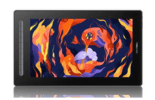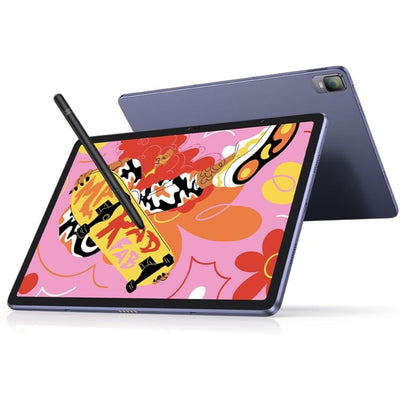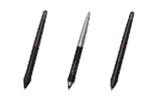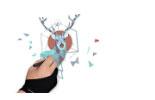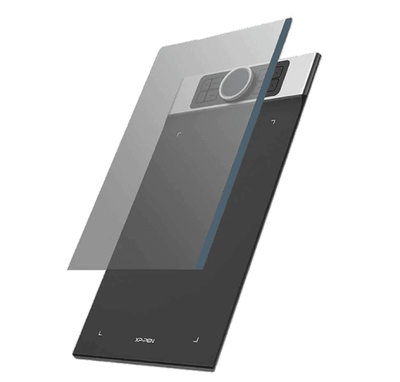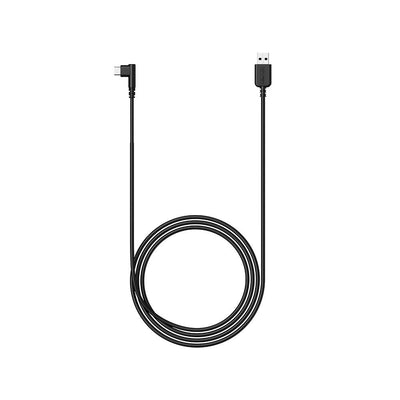Exploring the Difference between Aerial and Linear Perspective

When it comes to creating realistic and captivating artwork, understanding the concept of perspective is crucial.
Perspective allows artists to create depth and dimension on a two-dimensional surface, bringing their creations to life. One of the key distinctions in perspective is the difference between aerial and linear perspective.
In this article, we will delve into these two perspectives, exploring their definitions, techniques, and impact on artwork.
Understanding the Basics of Perspective in Art

Before we delve into the specific types of perspective, let's define what perspective means in the context of art.
In simple terms, perspective refers to the way objects appear to the eye based on their size, position, and distance from the viewer. By utilizing perspective, artists can create the illusion of depth and space in their work.
Perspective is a fundamental tool for artists, enabling them to create realistic and visually appealing compositions.
By understanding the principles of perspective, artists can control how the viewer perceives their art, leading to more immersive and engaging experiences.
- Defining Perspective
At its core, perspective is a system for representing three-dimensional objects on a flat surface. It involves the use of techniques and methods to create the illusion of depth, distance, and spatial relationships between objects.
Perspective allows artists to accurately depict how objects appear to recede into the distance, creating a sense of realism in their artwork.
One of the key aspects of perspective is the concept of a vanishing point. This is a point on the horizon where parallel lines converge, giving the illusion of depth and distance. Artists use vanishing points to guide the viewer's eye and create a sense of perspective in their artwork.
Another important element of perspective is foreshortening. Foreshortening is the technique of depicting objects that are closer to the viewer as larger and more detailed, while objects that are further away appear smaller and less detailed.
This technique adds depth and realism to a composition, making it more visually engaging.
- Importance of Perspective in Art
Perspective plays a crucial role in art, as it adds depth and realism to a composition. Without perspective, artwork can appear flat and lacking in depth, failing to capture the viewer's interest.
Perspective not only enhances the visual appeal of a piece but also provides a framework for creating visually compelling narratives and compositions.
By understanding and applying perspective, artists can create scenes that transport the viewer into a different world. Whether it's a sprawling landscape or an intimate still life, perspective allows artists to create a sense of space and depth that draws the viewer in.
Understanding the different types of perspective, such as aerial and linear perspective, allows artists to expand their creative toolkit and explore new ways to captivate their audience.
Aerial perspective, also known as atmospheric perspective, involves using color and value to create the illusion of distance. By using lighter and cooler colors for objects in the distance, artists can create the impression of depth and atmosphere.
Linear perspective, on the other hand, relies on the use of converging lines to create the illusion of depth and distance. Artists use this technique to create realistic architectural drawings and cityscapes, where buildings and structures recede into the distance.
By mastering the different types of perspective, artists can push the boundaries of their creativity and create artwork that is not only visually stunning but also emotionally captivating.
Perspective is a powerful tool that allows artists to bring their visions to life and create experiences that resonate with the viewer.
You might also need to know, how to draw in 2 point Perspective.
Delving into Aerial Perspective

Aerial perspective, also known as atmospheric perspective, is a technique used in art to create the illusion of depth and distance by simulating the effects of the atmosphere on the appearance of objects.
This type of perspective is particularly useful when depicting landscapes and outdoor scenes.
- Concept of Aerial Perspective
Aerial perspective is based on the observation that distant objects appear less distinct, lighter in color, and less detailed compared to closer objects due to the presence of atmospheric particles such as dust and moisture.
By incorporating these visual cues into their artwork, artists can give the impression of depth and distance.
Imagine standing on a hilltop overlooking a vast landscape. As your eyes scan the scene, you may notice that the mountains in the distance appear hazy and less defined compared to the trees and buildings nearby.
This is the effect of aerial perspective at play. The atmosphere acts as a filter, subtly altering the appearance of objects as they recede into the distance.
- Techniques for Achieving Aerial Perspective
There are several techniques artists can employ to achieve aerial perspective in their artwork. One common method is to use a gradual shift in color and value as objects recede into the distance.
Distant objects are often painted or drawn with lighter and cooler colors, while closer objects have more saturated and warmer tones.
Consider a landscape painting where the foreground is filled with vibrant green trees and flowers. As the artist moves towards the background, the colors gradually shift to cooler tones like blues and purples.
This subtle transition creates a sense of depth and distance, mimicking the way our eyes perceive objects in the real world.
Another technique is to reduce the level of detail as objects move further away. By slightly blurring or simplifying the shapes and textures of distant objects, artists can create the illusion of depth and enhance the sense of distance.
Imagine a painting of a cityscape where the buildings in the foreground are meticulously detailed, with every window and architectural feature carefully rendered.
As the artist moves towards the background, the buildings become less defined, with fewer details and softer edges. This technique not only adds depth but also guides the viewer's attention towards the focal point of the artwork.
- Impact of Aerial Perspective on Artwork
Aerial perspective has a significant impact on the overall aesthetic and mood of a piece of art. By incorporating this technique, artists can create a sense of vastness and depth, drawing the viewer into the scene.
Aerial perspective can also evoke a sense of tranquility and serenity, as distant objects appear softer and less defined.
Imagine a painting of a serene beach at sunset. The distant waves, painted with lighter and cooler colors, create a sense of calmness and tranquility. The viewer can almost feel the gentle breeze and hear the soothing sound of the ocean as they immerse themselves in the artwork.
Overall, aerial perspective adds realism and visual interest to artwork, enhancing the viewer's experience and allowing them to immerse themselves in the artist's vision.
It is a powerful tool that artists have been utilizing for centuries to create captivating and lifelike representations of the world around us.
You may also want know, 3 point Perspective Drawing
Unpacking Linear Perspective

While aerial perspective drawing focuses on capturing the effects of the atmosphere, linear perspective is concerned with depicting how parallel lines appear to converge in the distance.
It is commonly used to create the sense of depth and spatial relationships in realistic artwork.
- Principle of Linear Perspective
Linear perspective is based on the concept that as parallel lines recede into the distance, they appear to converge at a vanishing point.
This principle allows artists to create the illusion of depth and distance by accurately representing the scaling and positioning of objects in relation to each other.
- Methods for Creating Linear Perspective
To create linear perspective in their artwork, artists employ various techniques such as the use of horizon lines, vanishing points, and converging lines. The horizon line represents the viewer's eye level and serves as a reference point for establishing the positioning of objects in the composition.
Vanishing points are points on the horizon line where parallel lines converge. By aligning the lines in a composition to converge towards the vanishing point, artists can create the illusion of depth and distance.
Converging lines aid in creating the perception of three-dimensional space in two-dimensional artwork.
- Role of Linear Perspective in Composition
Linear perspective is a powerful tool for artists when it comes to creating visually appealing compositions. By manipulating the convergence of parallel lines, artists can guide the viewer's eye and create a sense of depth and spatial relationships within the artwork.
Linear perspective helps establish a hierarchy within the composition, emphasizing significant elements and creating a natural flow from the foreground to the background.
This technique allows artists to create engaging and dynamic compositions that draw the viewer's attention and evoke a sense of realism.
Aerial vs Linear Perspective : Comparative Analysis
Both aerial and linear perspective play essential roles in creating convincing and visually engaging artwork.
While they share the common goal of depicting depth and space, there are distinct differences in their approaches and effects.
- Similarities and Differences
One similarity between aerial and linear perspective is that both techniques aim to create depth and spatial relationships in artwork. However, they achieve this goal through different means.
Aerial perspective focuses on simulating the atmospheric effects on objects, creating a sense of distance and depth through color shifts and reduced detail.
On the other hand, linear perspective relies on the convergence of parallel lines to create the illusion of depth and establish spatial relationships between objects.
- Choosing the Right Perspective for Your Art
As an artist, the choice between aerial and linear perspective depends on various factors, such as the subject matter, artistic style, and desired visual impact.
Consider the mood and atmosphere you wish to convey in your artwork and select the perspective technique that aligns with your creative vision.
Experimenting with both aerial and linear perspective can open up new possibilities and help you develop a unique artistic voice.
Don't be afraid to combine and explore different perspective techniques to create visually stunning and captivating artwork.
The Evolution of Perspective in Art History

Throughout art history, perspective techniques have evolved and been interpreted in various ways by artists.
Understanding the historical context of perspective can provide valuable insights into the development and impact of these techniques.
- Early Use of Perspective
The use of perspective in art can be traced back to ancient civilizations, such as ancient Egypt and ancient Greece. These early cultures utilized basic techniques to create a sense of depth and spatial relationships in their artwork.
However, it was during the Renaissance period that perspective techniques were revolutionized.
Artists such as Brunelleschi and Alberti developed mathematical systems for accurately representing depth and space, leading to significant advancements in the depiction of perspective in art.
- Modern Interpretations of Perspective
In modern art, artists have pushed the boundaries of perspective techniques, challenging traditional ideas and experimenting with new approaches. Artists like Picasso and M.C.
Escher have played with distorted perspectives, breaking the rules of traditional perspective to create visually striking and thought-provoking artwork.
Contemporary artists continue to explore and reinterpret perspective, incorporating digital tools and innovative techniques to create immersive and captivating experiences for viewers.
In conclusion, understanding the difference between aerial and linear perspective is crucial for artists looking to enhance their artwork's depth and dimension.
Both techniques offer unique approaches to creating the illusion of space and can be used individually or in combination to achieve compelling visual results.
By mastering these perspectives, artists can engage viewers, evoke emotions, and bring their creative visions to life.






